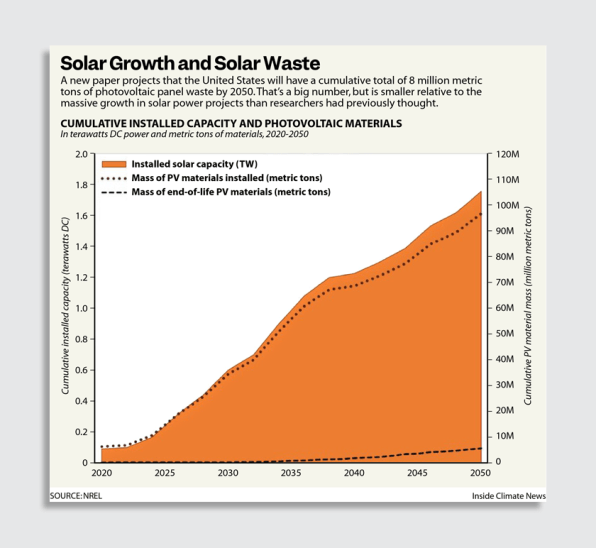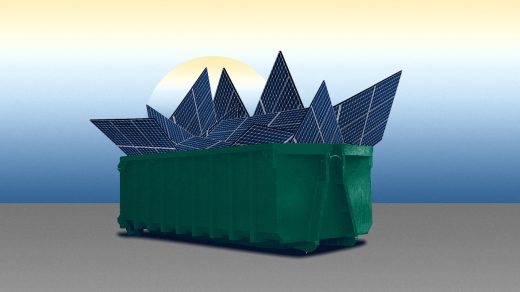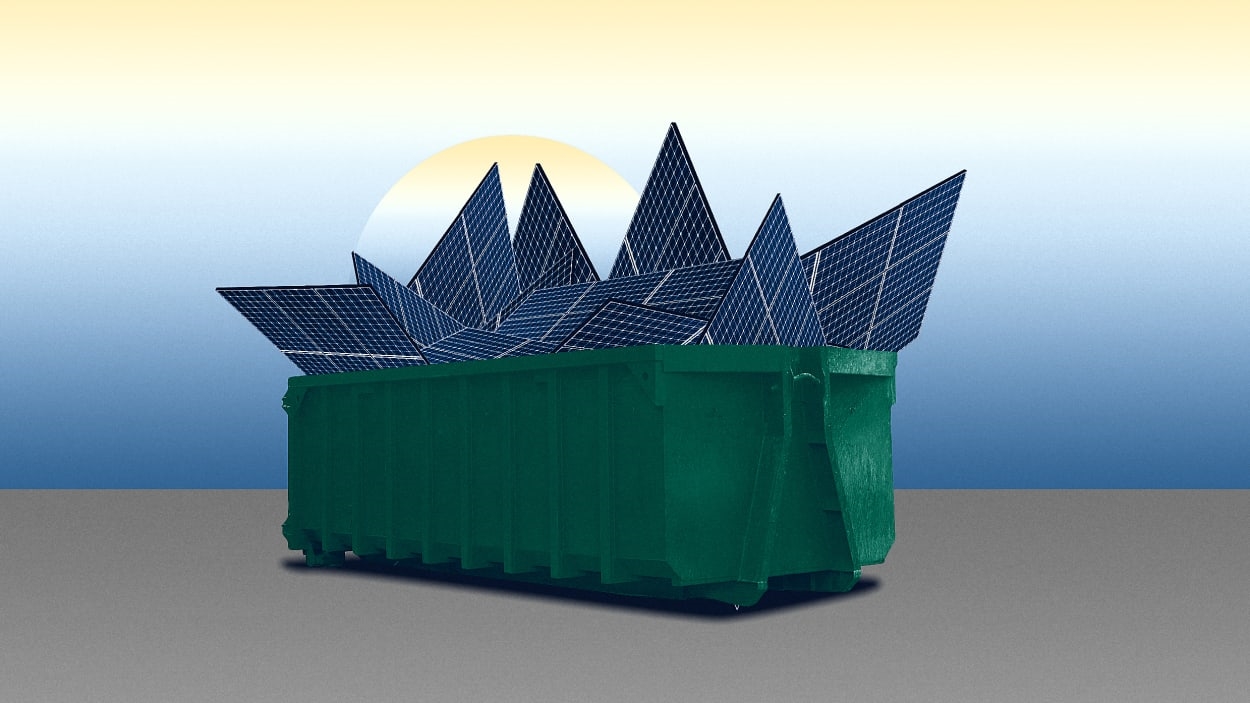Solar panel waste may not be nearly as bad as we once thought
By Dan Gearino—Inside Climate News
“Don’t panic,” said Heather Mirletz at the Colorado School of Mines, lead author of a recent paper that challenges several assumptions about what could happen when today’s generation of solar panels nears retirement age.
She has some encouraging news for anyone deeply concerned, or even mildly agitated, about how the world is going to deal with solar panel waste.
The paper, published in the journal PLOS One, argues that the panels will last longer than earlier estimates, and that solar farm operators should prioritize keeping panels in the field for as long as possible.
If solar panels can last 40 to 50 years, which is roughly double what used to be the rule of thumb for their life span, this changes the equation for the timing of their replacement and the amount of waste produced by the energy transition. And that kind of longevity is not much of a stretch, considering that new panels often come with warranties in the 25-year range, which indicates they should last well beyond that time frame.
The paper could be read as a counterpoint to some of the estimates in a 2016 report from the International Renewable Energy Agency that has been widely cited (including by me) in discussions about rising demand for solar panel recycling. The report projected that the United States would have a cumulative total of 7.5 to 10 million metric tons of solar panel waste in 2050.
Since 2016, the pace of solar power development has accelerated to the point that old estimates are no longer reliable. Based on this growth, the amount of waste in 2050 would be much higher than IRENA projected.
But that’s not the case, according to Mirletz and her coauthors. Using more recent data about the reliability of solar panels, they estimate that the United States will have a cumulative total of 8 million metric tons of waste in 2050. Considering the increase in assumptions since 2016 about how much solar will be deployed, that’s a big decrease in the share of panels that end up needing to be recycled. (For perspective, the country generated more than 250 million metric tons of municipal solid waste in 2018, the most recent year available.)
Instead of being recycled, many of those decades-old panels will still be operating, Mirletz said.
But 2050 is a long way off, so let’s talk about what happens closer to today. The paper’s findings also show that the wave of solar panel waste isn’t going to hit as soon as researchers previously expected. Instead of arriving in about 2030, it’s more likely to be about 2040. This gives the recycling industry more time to expand their operations and figure out ways to reduce costs.
Mirletz is finishing a PhD at the Colorado School of Mines in a program that works with the National Renewable Energy Laboratory, a few miles away. Her coauthors include Silvana Ovaitt, an NREL researcher.
“We’re trying to look at our energy system more holistically,” Mirletz said. “It’s not just about producing energy, so that we can turn the lights on, but it’s also about making sure that the people and the systems in place along that entire supply chain—everything that it takes to do that, to turn the lights on—is not harming people.”
She is talking about the so-called circular economy, which places an emphasis on a continual reuse of materials and tries to reduce what ends up in landfills.

Applying these principles to solar power, she and her coauthors found that there wasn’t much research into the solar panel life cycle that took into account recent advances in the efficiency and durability of panels.
“We wanted to push back a little bit on this scare of, ‘We’re gonna have (tens of millions) of metric tons of waste from PV. We’re all gonna die,’” she said. “PV” stands for photovoltaic, which is the process of converting sunlight to electricity in solar panels.
She’s kidding about fears that their detritus will contribute to our mortality, but this reflects the way that solar waste often gets talked about by opponents of solar projects, and even the tone of a good share of media reporting on the subject.
The findings are based in part on a modeling tool developed by NREL, which uses recent reliability data to improve forecasts of how long solar panels will last in the field.
The results show that it may be better to use solar panels in existing arrays for as long as possible rather than replacing them when they reach an age that used to mean retirement. That way, newly manufactured panels can be used mostly in new projects.
There are a few caveats, including that solar technology is constantly changing, and the improvements in electricity output don’t necessarily coincide with gains in durability, Mirletz said. So, this kind of analysis is going to need to be done continually as we move into an era in which solar power is rapidly expanding.
Also, there is disagreement among researchers about how much solar power is going to need to be built to get to net-zero carbon emissions, which is a key variable in projecting the amount of waste. This paper derives its estimate for solar deployment from data in the Solar Futures Study, which the Department of Energy released last year. Other estimates are higher or lower.
But under just about every scenario, there is going to be much more solar power, and with it comes a need to figure out how to get the most out of this resource while also reducing the technology’s waste.
(20)



